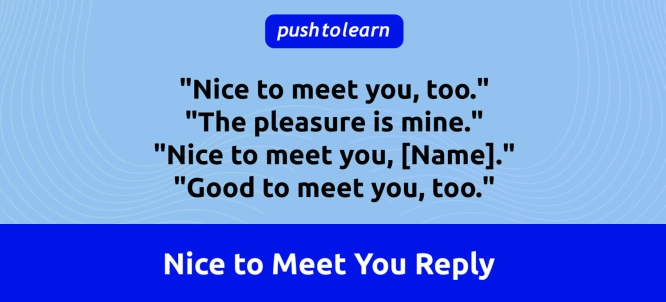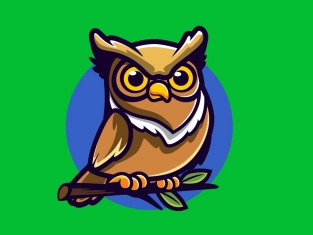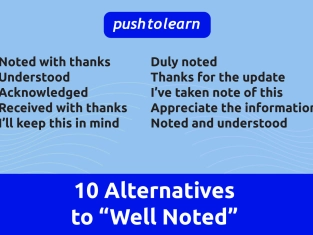by PushtoLearn
Nice to Meet You Reply
Table of Contents
Nice to Meet You - Replies
This exercise focuses on replies to Nice to Meet You
20 Best Ways to Respond to “Nice to meet you” Replies, Messages & Texts
When someone says, "Nice to meet you," it’s polite to respond with a similar greeting. This exchange happens in many social situations, like when you meet someone for the first time at a party, work, or a new class. The context should be more formal or business. Previously, we discussed 10 ways to respond to "I miss you" and 10 Synonyms to Hope You Are Well. Also it may be useful to know to say Thank you all.
1. Simple and Polite Responses
These are basic, polite responses that work in almost any situation:
-
"Nice to meet you, too."
-
"It’s nice to meet you, too."
-
"Pleasure to meet you, as well."
-
"The pleasure is mine."
-
"Likewise."
These responses show respect and reciprocate the positive sentiment. They’re short, so they’re easy to remember and work well in both formal and casual settings.
2. Friendly and Enthusiastic Responses
If you want to sound warm and friendly, you can add a bit of enthusiasm to your response:
-
"It’s really nice to meet you!"
-
"I’ve heard so much about you; it’s great to finally meet!"
-
"I’m so glad we got to meet today."
-
"I’ve been looking forward to meeting you!"
These responses are ideal if you’re genuinely excited to meet the person or if it’s someone you’ve been wanting to meet for a while. They work well in social or networking situations.
3. Formal and Professional Responses
In professional settings, it’s good to keep responses a bit more formal, especially if you’re meeting someone for business or work purposes.
-
"It’s a pleasure to meet you."
-
"I’m pleased to meet you."
-
"I’m delighted to make your acquaintance."
-
"Thank you; it’s a pleasure to meet you as well."
These responses are more polished and are ideal for first meetings in business settings, interviews, or formal gatherings.
4. Casual Responses
In relaxed, informal situations, you might use more casual language:
-
"Same here!"
-
"Great meeting you!"
-
"Good to meet you, too."
-
"Nice meeting you!"
These responses are friendly and casual, perfect for meeting new people in informal settings like social events or casual gatherings.
5. Responses If You’re Meeting Virtually
In a virtual setting, such as a video call or online meeting, you can acknowledge the virtual format:
-
"Nice to meet you virtually!"
-
"It’s great to meet you online."
-
"I’m glad we could connect virtually!"
These responses are suitable if you’re meeting someone for the first time online and want to acknowledge the remote nature of the introduction.
Example Conversation
Person A: "Hi, I’m Sarah. Nice to meet you."
Person B: "Nice to meet you, too, Sarah."
or
Person A: "Hi, I’m Tom. Nice to meet you."
Person B: "The pleasure is mine, Tom. I’ve heard great things about you."
Tips for Responding to "Nice to Meet You"
-
Smile: A smile can make any response sound warmer and more genuine.
-
Use their name: If you remember their name, use it in your response (e.g., "Nice to meet you, Sarah"). This makes the interaction feel more personal.
-
Match the formality: If the other person is formal, respond in kind. If they’re more casual, feel free to be casual as well.
-
Add a follow-up: If appropriate, you can follow up with a question or comment to keep the conversation going, like, "How was your journey here?"

Common Replies to Nice to Meet You
Here are some easy ways to respond to "Nice to meet you":
|
Greeting |
Reply Examples |
|
"Nice to meet you." |
"Nice to meet you, too." |
|
"It’s a pleasure to meet you." |
"The pleasure is mine." |
|
"Hi, I’m [Name]." |
"Nice to meet you, [Name]." |
|
"Good to meet you." |
"Good to meet you, too." |
These responses are simple and polite. When someone is being friendly, it’s important to match that tone and be polite as well.
Theory: Why This Exchange Matters
When you meet someone for the first time, you are making a first impression. The words "Nice to meet you" show that the person is happy to make a connection with you. A good reply strengthens this first impression and sets a positive tone for future interactions.
Everyday Use
You can use these phrases in many places, like:
⭐ Meeting a new colleague at work.
⭐ Introducing yourself to someone at a party.
⭐ Starting a conversation with a classmate.
⭐ During online or face-to-face interviews.
Common Errors to Avoid
❌ Not responding at all: If someone says “Nice to meet you,” it’s polite to always respond.
❌ Too casual or too formal: If the person is formal, match their tone. If they’re casual, don’t be overly formal.
❌ Forgetting to acknowledge their name: If someone tells you their name, try to use it in your reply. It shows that you are paying attention.
FAQ
What can I say instead of "Nice to meet you"?
You can say "It’s a pleasure to meet you" or "Good to meet you."
Should I always respond with "Nice to meet you, too"?
Not always, but it’s the most common and polite response. If you want to be a little more formal, you can say, "The pleasure is mine."
What if I forget their name?
If you forget someone’s name, you can politely ask, "I’m sorry, what was your name again?" This shows you care.
Can I use these phrases in an email?
Yes! You can write, "It was nice to meet you" at the start or end of an email when you’re writing to someone for the first time.
Is it okay to use these phrases in a job interview?
Yes, it’s very professional to say "Nice to meet you" during a job interview. You can say it when you meet the interviewer for the first time.
Is it okay to just say "Likewise"?
Yes, "Likewise" is a polite and simple response that works well. It’s short, so it’s best in casual or informal settings.
Can I say "You too"?
Yes, "You too" is a natural and friendly response. It’s informal and great for casual settings.
What if I forget their name?
If you’re unsure of their name, you can simply say, "Nice to meet you, too!" and try to catch their name later in the conversation or politely ask again.
Should I shake hands when I respond?
In many cultures, shaking hands is common, but it depends on the setting and current health guidelines. If in doubt, observe the other person’s body language.
Is it appropriate to respond enthusiastically in a formal setting?
Enthusiasm is always good, but in formal settings, keep it professional. For example, "I’m very pleased to meet you" sounds both enthusiastic and formal.

